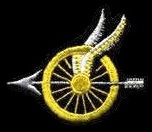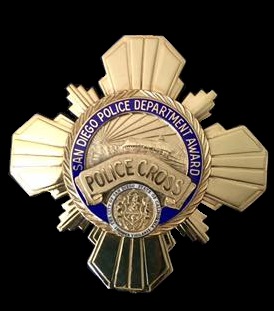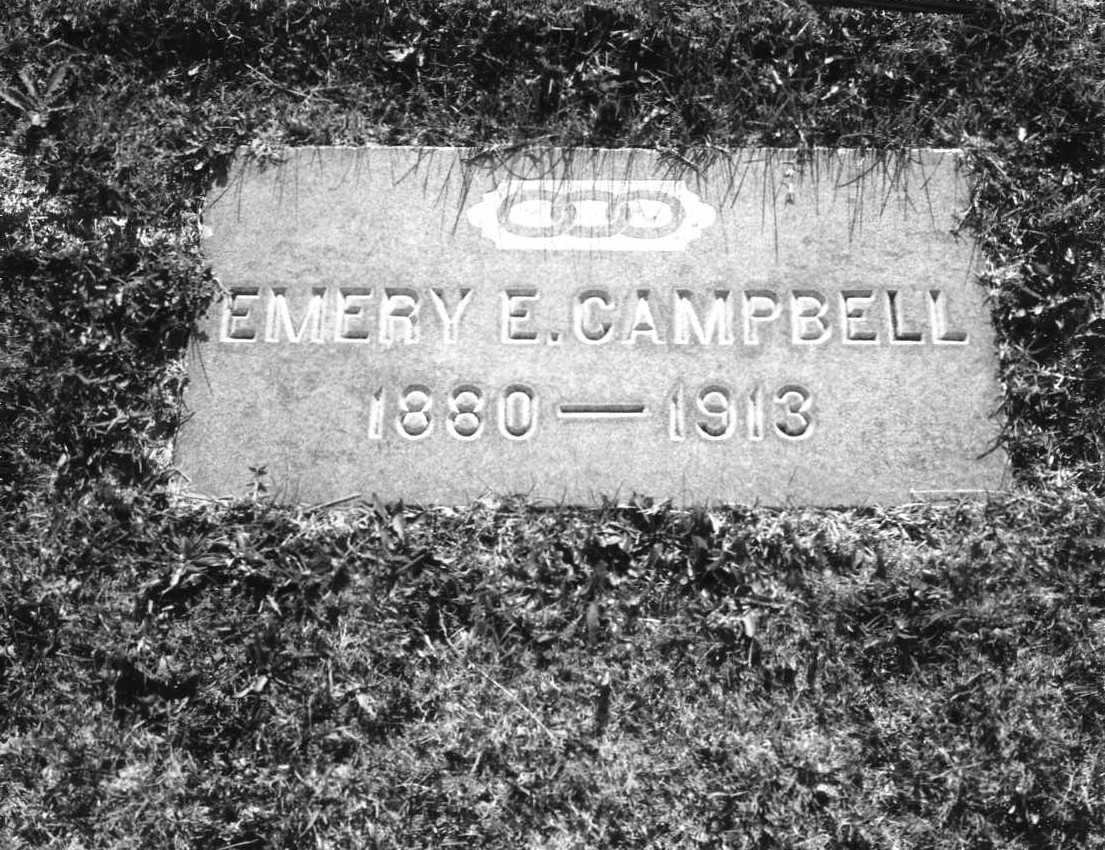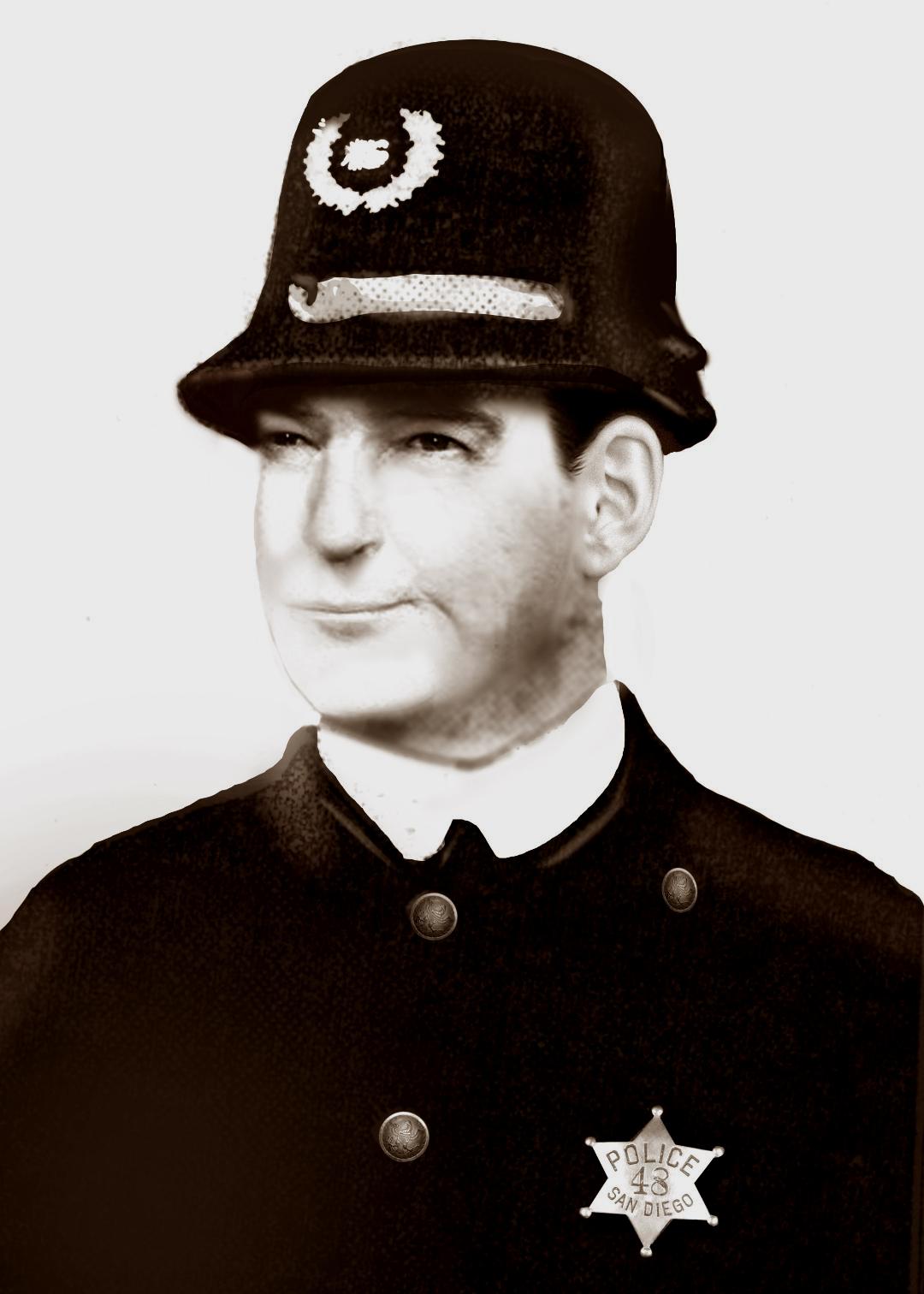



MOTORCYCLE OFFICER EMERY E. CAMPBELL
BADGE 48
SDPD 05/20/1912 - 08/27/1913
1879 - 08/27/1913
“Policeman Shot and Killed in Sensational Fight With Drunken Bad Man, Answers the Call of Duty and Meets His Death” was the banner headline in the morning edition of the San Diego Union on August 28, 1913.
The paper went on to give a detailed account on the shooting death of Motorcycle Officer Emery Campbell, the first known San Diego police officer to be killed in the line of duty.
Emery Campbell was born in Fort Scott, Kansas in 1879 and appointed a San Diego police officer on May 20, 1912. At the time of his appointment Campbell lived at 3426 G Street with his wife and 9-year-old son Stanley.
On August 26, 1913, Officer Campbell was made a motorcycle officer and promptly bought a new cycle.
At 5:30 p.m. on August 27th, Officer Campbell was sent to investigate a report of a man creating a disturbance in a bar at 5th and G Street downtown. Unknown to Officer Campbell was that the man, 46-year-old William Bremer had just purchased a .38 caliber handgun a few minutes earlier at a store at 4th and E Street and was headed towards a bar to kill someone.
Officer Campbell had just arrived when he saw Bremer standing on the northwest corner. Approaching from behind, Officer Campbell touched Bremer on the shoulder. Bremer immediately turned and started shooting. The first shot hit Officer Campbell in the neck tearing through an artery. Despite being severely wounded, he was still able to hold onto Bremer when the next two shots struck him in the cheek and shoulder. Realizing he could not let Bremer escape, Officer Campbell shoved him to the sidewalk where he was pinned. He was able to hold Bremer down until F.E. Walker, a former Los Angeles Policeman, Patrolman John Tippitt, Deputy Sheriff James Brown and a citizen named J.S. Hendrix were able to show up to help him.
With the other men now fighting Bremer, a passing car was flagged down and Officer Campbell was rushed to headquarters where he could be treated in the police hospital. During the ride, he bled profusely. Despite the loss of blood Officer Campbell refused help getting out of the car and walked under his own power to the operating room. It’s likely he didn’t realize how badly he was injured. When he died several minutes later, several officers reported he had a puzzled look on his face.
Back at the scene, Bremer was engaged in an all out fight with the other men as they tried to take him into custody. He pointed the gun at Deputy Brown and pulled the trigger, only to have Brown grab the hammer keeping it from firing. Bremer then tried to shoot himself. Bremer was finally subdued and taken back to police headquarters where he threatened to kill everyone there.
Bremer later asked Officer Pat Oviatt, “Did that fellow I shoot die? Well, we all have to go sometime. Myself, I’m as good as dead anyway.” In an interview with detectives, Bremer told them he had bought the gun with the intention of killing a bartender who had shortchanged him 75 cents.
Officer Campbell’s murder left the department in a strange situation. Never before had an officer been killed in the line of duty, so no one was really sure what to do next. Chief Keno Wilson went to Officer Campbell’s home to break the news to his wife. She wasn’t there at the time and learned officers were trying to contact her when she returned home several hours later and was told by neighbors. Mrs. Campbell immediately went to the station and asked Chief Wilson what happened. Chief Wilson, overcome with emotion, wasn’t able to tell her immediately and she guessed the worse. As the two consoled each other, Mrs. Campbell said her husband might have had a premonition of his death before he left the house to start his shift. Mrs. Campbell told Wilson that morning he seemed very gloomy which was not at all like him.
There are two versions of what happened next.
The first story is; after Chief Wilson told Mrs. Campbell what happened, he gave her Emery’s badge, a silver six-point star, number 48. The woman kept the badge in the family where it was passed from generation to generation.
The other story is bizarre.
On September 2, 1968, Sergeant Ed Kenney interviewed retired Officer Hugh Gallaher. Officer Gallaher was hired at the same time as Officer Campbell and worked with him. Gallaher told Sergeant Kenney he was issued badge number 48 and Officer Campbell was issued number 47. Officer Gallaher said because he was Officer Campbell’s partner and friend, he was able to obtain number 47 at the time his death. Officer Gallaher said after Officer Campbell’s murder, Keno Wilson offered the badge to the widow but she refused to take it as it still had his blood on it. Officer Gallaher said he kept the badge for the next 55 years. Officer Gallaher then gave the badge to Sergeant Kenney.
In November 1969, Chief O.J. Roed received a letter from Mrs. Bessie R. McCannon of San Francisco. In the one page letter she wrote, “To the chief of police, dear sir, I just found this star number 48, among my possessions and just don’t know what to do with it. I am getting along in years, so I thought I would send it back to the San Diego Police Department. It belonged to my uncle, Officer Emery Campbell. He was killed in the line of duty. I believe a man by the name of Kramer shot and killed him. All of his family has since died. I am also the widow of a San Francisco police officer. This happened about 50 years ago. Thank you, Mrs. Bessie R. McCannon.”
In light of the letter, Sergeant Kenney re-contacted Officer Gallagher. Gallagher produced photos of himself in 1913 wearing badge number 46. All known photographs of Campbell do not show his badge number. Now the question becomes where did badge number 47 come from and who wore it? If Campbell wore badge number 47, who wore number 48 and how did Bessie McCannon come into possession of it?
Hugh Gallagher died on April 25, 1975, taking with him the answers to the mystery. Sergeant Kenny’s attempts to contact Bessie McCannon were unsuccessful as her return address was not valid.
The San Diego Police Historical Association now owns badges 47 and 48. For the longest time it was believed one of the badges belonged to Officer Campbell, but which one might never be known. That changed when, in 2009, the police crime lab conducted a forensic examination of both badges and located a microscopic spec of blood on number 48.
William Bremer was tried and convicted in the murder of Officer Campbell. He was sentenced to life in prison at San Quentin.
In 1931 he was paroled after serving 18 years.
In 1941 Bremmer wrote a letter to the governors office asking that he be pardoned for Campbell’s murder. Bremer said the incident was a long time ago yet his past kept coming back to haunt him. He said everywhere he went he was labeled a cop killer. The Governors office did not make a decision on the case and instead sent the letter to Chief of Police Cliff Peterson for his input. Peterson was outraged and publicly spoke against any pardon being granted. The Governors office denied the request.
In recognition of Officer Campbell's sacrifice, the San Diego Police Historical Association has named their highest honor "The Emery E. Campbell Medal of Valor."

THE THIN BLUE LINE


Basic information is provided as a courtesy and is obtained from a variety of sources including public data, museum files and or other mediums. While the San Diego Police Historical Association strives for accuracy, there can be issues beyond our control which renders us unable to attest to the veracity of what is presented. More specific information may be available if research is conducted. Research is done at a cost of $50 per hour with no assurances of the outcome. For additional info please contact us.